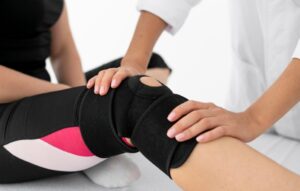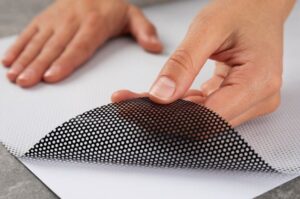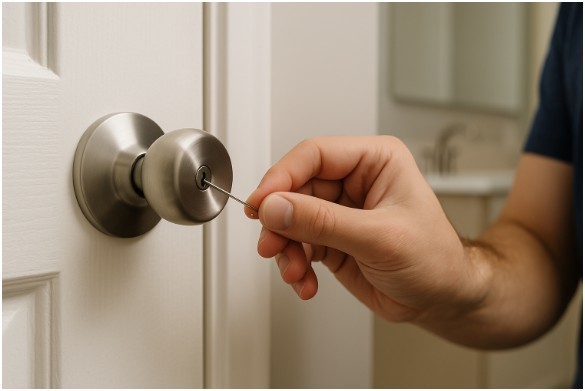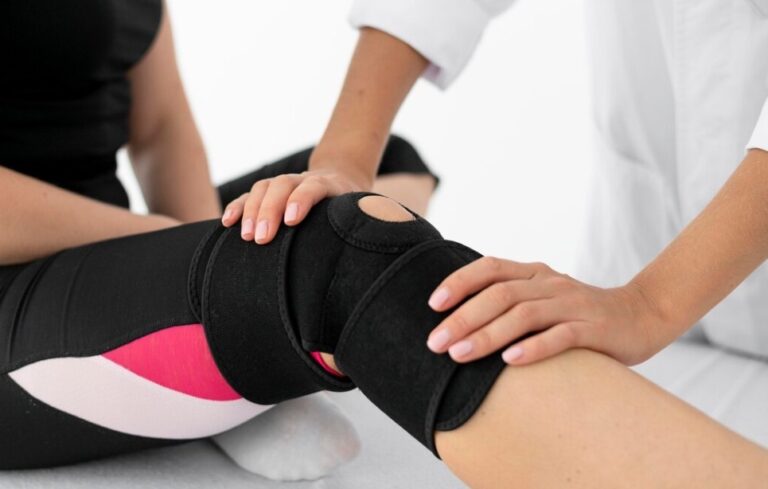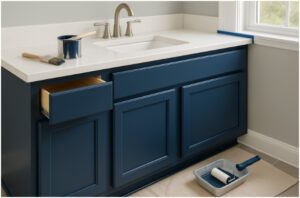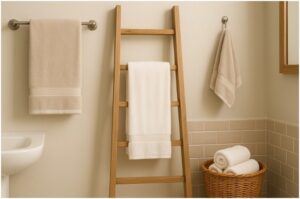I’ll admit it—locking myself out of the bathroom once made me feel like the world’s most forgetful person. I was home alone, barefoot, and all I had was a paperclip and mild panic. That day, I learned exactly how to open a locked bathroom door without damaging it.
Since then, I’ve helped friends, neighbors, and even my curious niece who managed to “accidentally” lock herself in.
So, if you’ve found yourself in the same awkward spot, don’t worry. Here’s everything I’ve learned about how to open locked bathroom door safely, quickly, and stress-free.
What’s the Easiest Way to Open a Locked Bathroom Door?
Most bathroom doors use privacy locks, which means they’re built for convenience—not heavy security. These locks often have a small hole in the center of the doorknob, known as an emergency access point.
If you see that tiny hole, you’re in luck. You can open it using simple household items like a paperclip, bobby pin, or small screwdriver.
Insert the tool straight into the hole, apply gentle pressure, and either push or twist, depending on your lock type. You’ll feel a click when it releases.
I like this method because it’s quick, damage-free, and doesn’t require fancy tools. It’s basically a DIY escape plan for minor lock mishaps.
How Do You Open a Pinhole or Twist Lock?
When I first figured out the anatomy of a privacy lock, I realized most of them fall into two categories: push-button locks and twist locks. Each needs a slightly different trick to open.
For push-button locks:
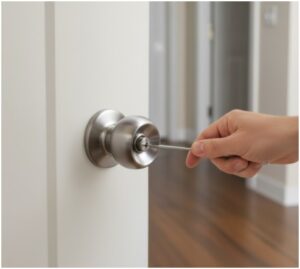
Insert your tool (a straightened paperclip works best) into the hole and push gently until you hear or feel a click. That’s the lock disengaging. Then, just turn the knob.
For twist locks:
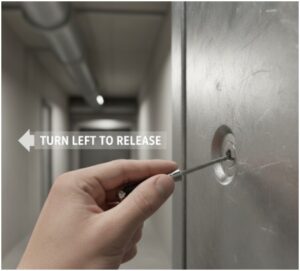
You’ll notice a slotted post inside the hole. In that case, insert your tool and twist it slightly to the left or right. It’s almost like turning a tiny screw. Once you feel resistance release, the door should open easily.
It’s oddly satisfying once you get the hang of it—like solving a little mechanical puzzle with minimal effort.
What If the Door Has a Coin Slot Instead of a Hole?
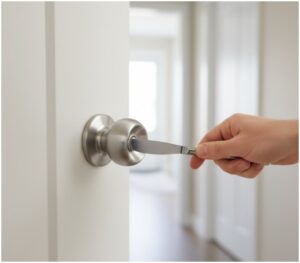
Some modern bathroom doors skip the pinhole and come with a coin-sized slot instead. When I moved into my apartment, I thought it was decorative until I got locked out one morning.
All you need is a coin, butter knife, or flat key. Insert it into the slot and gently turn it either direction. That rotates the internal locking mechanism and unlocks the door. It’s one of the simplest fixes—no jiggling or finesse required.
If you live in newer housing, keep a coin handy. It’s the universal key for this style of privacy lock.
How to Open Locked Bathroom Door Without a Hole
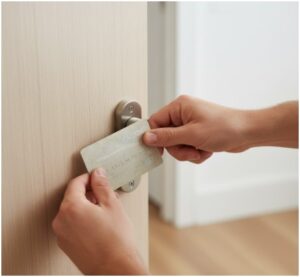
If your doorknob doesn’t have a pinhole or slot, it’s likely a latch-style lock. In that case, I’ve used what I call “the credit card rescue.”
Slide a thin, flexible card—like an old gift card—into the gap between the door and the frame, just above the latch.
Angle the card toward the doorknob and wiggle it while gently pressing on the door. The goal is to push back the latch’s slanted edge until it retracts.
It might take a few tries, but when it works, it feels magical. Just make sure not to use your actual credit card—it can bend or break.
What If the Door Has Visible Screws on the Knob?
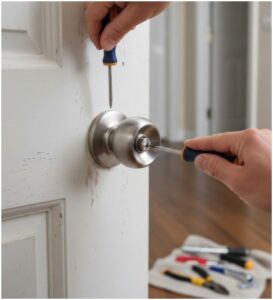
Here’s another scenario I’ve faced: the lock wouldn’t budge, but the screws were exposed. That’s good news. You can simply disassemble the knob.
Use a screwdriver to remove the screws on the outer plate of the doorknob. Once the handle comes off, you’ll see the latch mechanism. Turn it manually with your screwdriver to retract it.
It’s a slightly more involved fix, but if you’re comfortable with tools, it’s still an easy win—and far cheaper than calling a locksmith.
What Should You Do If You’re Locked Inside?
I once helped a friend whose toddler locked the door from inside—she was panicking on one side, and I was on the other with a butter knife. If you’re the one trapped inside, stay calm.
First, call out for help if someone’s nearby. It’s always easier to unlock a door from the outside. If not, try the card trick from your side. Sometimes there’s enough play in the latch to slide it back.
If you can reach a window safely—especially on a ground floor—use it as a temporary exit. But if there’s a medical or safety risk (like a child locked in), don’t hesitate. Call the fire department. They handle this sort of thing all the time.
When Should You Call a Professional?
If the lock resists every trick in the book, it might be time to call in a pro. Deadbolts, damaged locks, or high-security bathroom handles require specialized tools.
Calling a locksmith can save you from damaging your door or frame. Plus, they can rekey or replace the lock so it doesn’t happen again. I learned the hard way after scratching up my door during a stubborn lock attempt—some situations just need a professional touch.
Quick Comparison: Common Bathroom Lock Types and Fixes
| Lock Type | Tool to Use | What to Do |
| Pinhole (Push-button) | Paperclip, small screwdriver | Push tool straight in until it clicks |
| Twist Lock (Slotted) | Flat tool or key | Insert and twist left or right |
| Coin Slot | Coin, butter knife | Insert and rotate |
| Latch Only | Plastic card | Slide card between frame and latch |
| Exposed Screws | Screwdriver | Remove knob and turn latch manually |
FAQs About How to Open Locked Bathroom Door
Q1. Can I use a knife to open a locked bathroom door?
Yes, but be careful. Use a butter knife—not a sharp one—to avoid injury or damaging the door. It works well for slot-style locks or in place of a coin for twisting mechanisms.
Q2. Will I damage my lock by using a paperclip or card?
Usually not. Privacy locks are designed for easy unlocking in emergencies. Just don’t force the tool—gentle pressure is enough. If you feel resistance, stop and reassess before trying again.
Q3. What if none of these methods work?
If all else fails, call a locksmith. It’s better to pay for a quick service than to ruin your door. They can open it cleanly and even provide an emergency key for future mishaps.
Q4. Can I prevent this from happening again?
Absolutely. Keep an emergency unlocking tool (like a flat key or paperclip) taped above the doorframe or in a nearby drawer. It’s a small habit that can save big frustration later.
Crisis Averted: My Favorite Trick That Always Works
Every lockout story teaches a little patience and a lot of creativity. For me, the trusty paperclip remains undefeated. It’s simple, reliable, and always nearby—proof that tiny tools can save big headaches.
If you ever find yourself locked out, stay calm and remember: privacy locks are built for safety, not security. You’ll get that door open faster than you think.
Pro Tip: Keep a paperclip in your wallet or a coin on your keychain. You never know when you’ll need a quick bathroom rescue.

